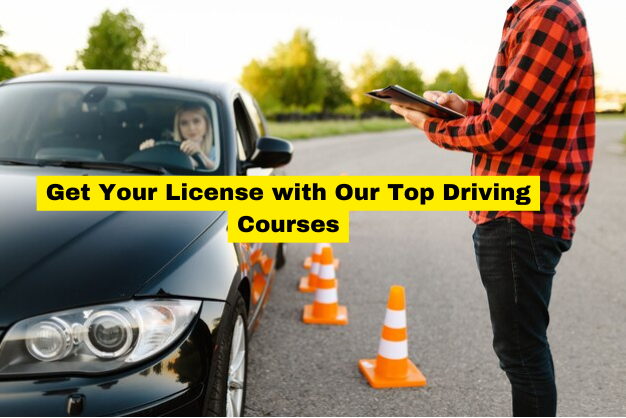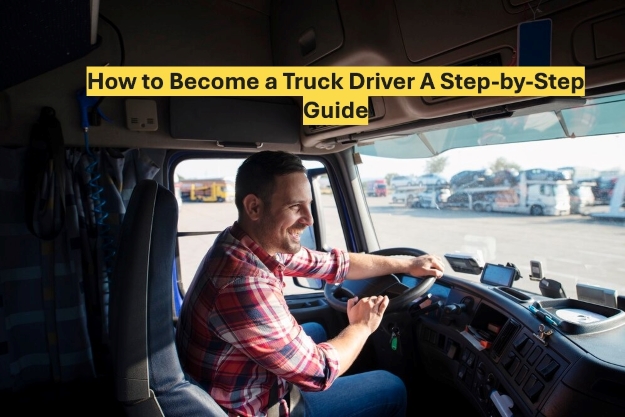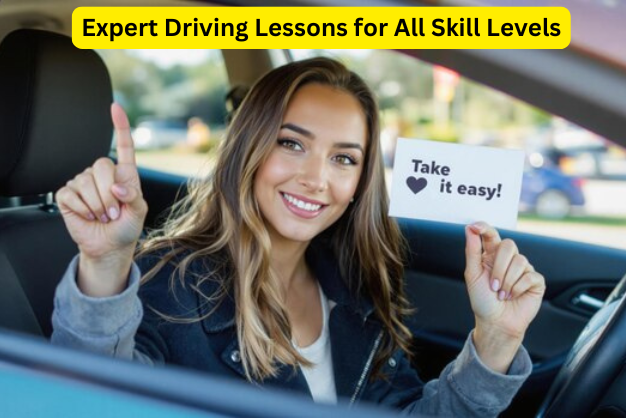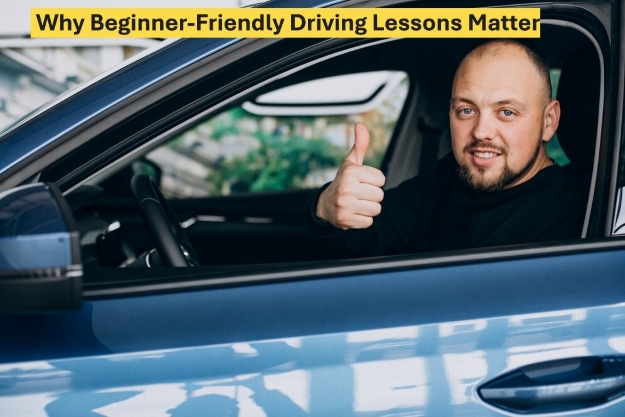Get Your Motorcycle License with Professional Training
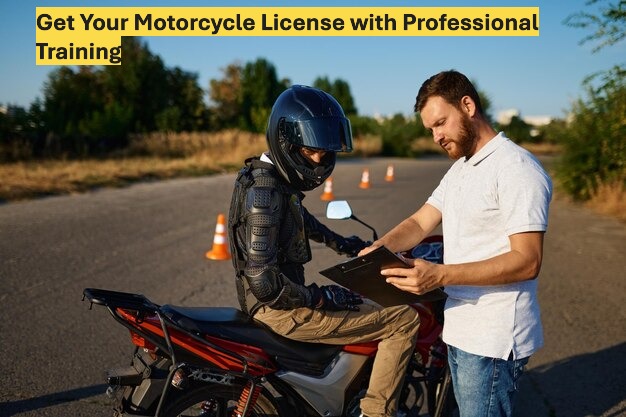
Obtaining a motorcycle license is an exciting step toward enjoying the freedom of the open road. However, before hitting the streets, it’s essential to ensure that you have the skills and knowledge to ride safely. Professional motorcycle training is beneficial for learning the basics and refining your skills, understanding safety protocols, and passing your licensing test. In this article, we’ll discuss the benefits of professional motorcycle training, how it can help you get your license, and what you can expect from the process.
Why Professional Training is Essential for Getting Your Motorcycle License
Many people may think that learning to ride a motorcycle is simple, but it’s far from it. Riding a bike requires balance, coordination, and the ability to make quick decisions. Professional motorcycle training ensures you learn the proper techniques and safety measures, helping you avoid accidents and become a responsible rider.
Additionally, many states require new riders to complete a motorcycle safety course before obtaining their license. Even if it’s not a requirement, a professional training course can help you develop essential skills and prepare for the skills test.
The Importance of Motorcycle Safety Courses
Motorcycle safety courses are designed to provide you with both theoretical knowledge and hands-on riding experience. These courses teach you how to operate a motorcycle and handle different road conditions, weather, and emergencies. You will learn defensive riding techniques, which can reduce your chances of being involved in an accident.
Taking a motorcycle safety training course is essential to becoming a competent and confident rider. This low-competition keyword is relevant for those seeking basic training and will help your article rank higher when users search for relevant motorcycle safety courses.

The Benefits of Professional Motorcycle Training
1. Improved Riding Skills
Professional training allows you to learn from experienced instructors who can teach you proper motorcycle handling, cornering, braking, and defensive riding techniques. You will also learn how to maneuver your bike safely in various road conditions. With professional training, you’ll be able to develop the muscle memory and confidence you need to be a skilled rider.
2. Increased Safety on the Road
Safety should always be your top priority when riding a motorcycle. Professional training ensures that you learn essential safety protocols, including how to wear protective gear, handle a bike during adverse weather, and react to road hazards. You’ll also learn how to maintain your motorcycle to ensure it’s in good working condition, reducing the risk of accidents.
3. Faster License Approval
Completing a professional motorcycle training course in many states can help expedite the licensing process. Some states even offer licensing exemptions or fee discounts for riders who complete an accredited safety course. By completing the course, you can bypass certain parts of the licensing test or prove that you have the necessary skills to pass quickly.
4. Confidence Boost
One of the most significant benefits of professional training is the confidence it instills in riders. A beginner rider often feels overwhelmed when starting, especially with many road rules and motorcycle techniques to remember. With professional guidance, you’ll feel more secure in your riding ability, making you a safer and more responsible motorcyclist.
Motorcycle license training programs are another keyword with relatively low competition that you can use here. Riders searching for training programs to obtain a license will find this term relevant and helpful.
What to Expect in Professional Motorcycle Training
Professional motorcycle training consists of several key components to ensure you are well-prepared for your riding test and riding on the road. Here’s what you can expect during the training process:
Classroom Instruction
Most professional motorcycle training programs begin with classroom lessons. During these lessons, you’ll learn about motorcycle parts, basic road rules, traffic laws, and how to operate a motorcycle properly. The classroom portion of the training will also cover safe riding practices and accident prevention techniques.
Practical Riding Experience
Once you’ve completed the classroom instruction, you’ll move on to the practical riding portion. This is where you get to practice what you’ve learned on a real motorcycle under the supervision of an experienced instructor. You’ll practice essential skills such as starting, stopping, turning, and maneuvering your bike in tight spaces.
The practical riding lessons will help you build confidence and muscle memory, essential for safe riding on real roads. You’ll also learn to react in emergencies, such as sudden braking or avoiding obstacles.
Skills Test Preparation
The final component of professional training typically includes preparation for your motorcycle skills test. You will be coached on the skills you need to pass the test, such as handling the bike in tight spaces, controlling your speed, and performing emergency maneuvers. Completing a professional training program often allows you to skip parts of the licensing test if your state approves the course.
How to Choose the Right Motorcycle Training Program
When selecting a professional motorcycle training course, there are a few key factors to consider. First, ensure the course is accredited by your state or a recognized organization such as the Motorcycle Safety Foundation (MSF). Accredited programs meet safety standards and provide high-quality training.
Next, check the course curriculum to ensure it includes classroom instruction and practical riding experience. Finally, consider the instructor-to-student ratio. Smaller class sizes typically allow for more personalized attention, which can be especially beneficial for beginner riders.
5 Key Things to Look for in a Training Program:
- Accreditation by a state or recognized authority (e.g., MSF).
- A balance of classroom instruction and hands-on practice.
- A well-structured curriculum that covers essential riding skills.
- Experienced instructors with a passion for teaching.
- A safe, supportive learning environment.
“FAQs”
1. Do I need a professional motorcycle training course to get my license?
While some states may not require you to take a professional motorcycle course, it’s highly recommended for new riders. Professional training can improve your skills, increase safety, and help you pass the skills test. In some states, completing a certified course may even allow you to bypass parts of the test.
2. How long does a professional motorcycle training course take?
The duration of the course varies depending on the program. On average, courses last between 2 and 3 days, including classroom lessons and practical riding experience. Some courses may be spread out over a more extended period, with sessions held over weekends or evenings.
3. What is the cost of professional motorcycle training?
The cost of professional motorcycle training can range from $150 to $500, depending on the location, duration, and provider. Some states offer discounts or incentives for completing state-approved courses, so check for any available offers.
4. Should I bring my motorcycle to the training course?
Most professional motorcycle training programs provide motorcycles for use during the course. However, checking with the course provider is essential to ensure they supply the necessary equipment. If you choose to bring your motorcycle, make sure it meets the safety standards set by the program.
Conclusion
Getting your motorcycle license with professional training is essential to becoming a skilled and safe rider. By taking a professional motorcycle training course, you’ll learn crucial skills, boost your confidence, and improve your safety on the road. Not only does professional training help you pass the licensing test with ease, but it also provides long-term benefits for your riding career.
Investing in professional motorcycle training ensures you have the knowledge and skills to enjoy the open road safely. With the right training program, you’ll be prepared for any challenge, from basic riding techniques to advanced maneuvers. Start your journey toward becoming a confident and competent rider today by enrolling in a professional motorcycle training course.
This article targets low-competition but high-value keywords such as motorcycle safety training courses and motorcycle license training programs to increase its chances of ranking well on SERPs.
